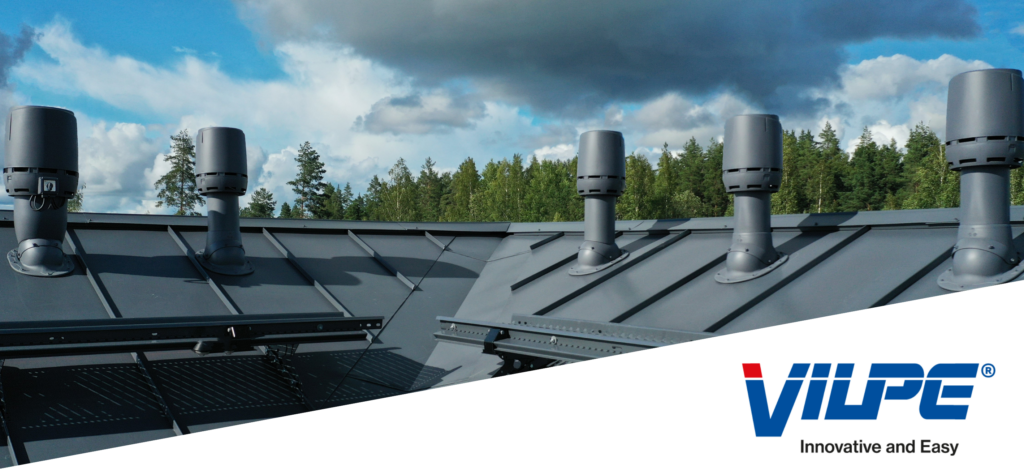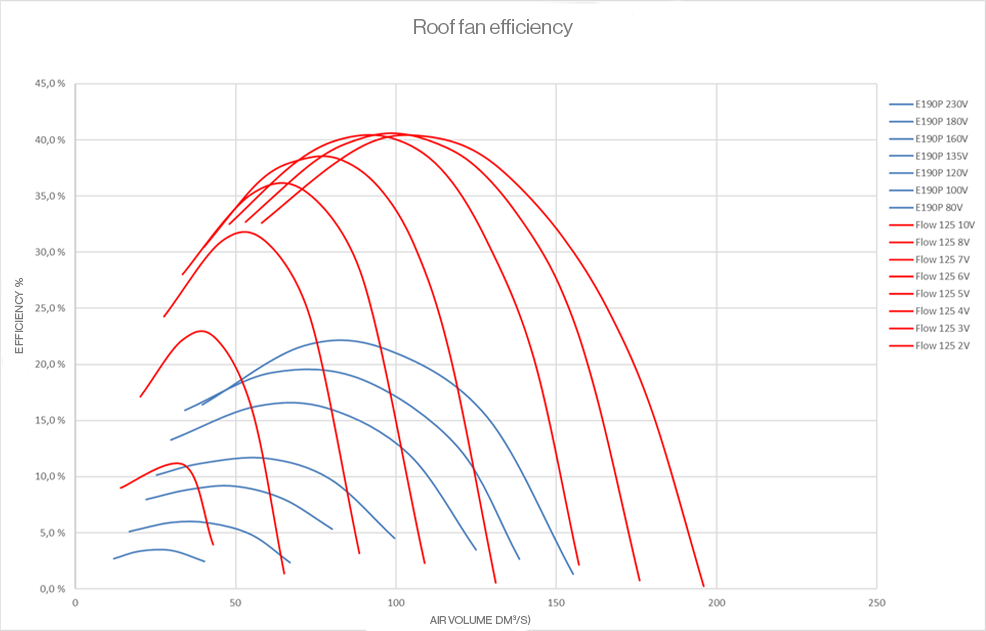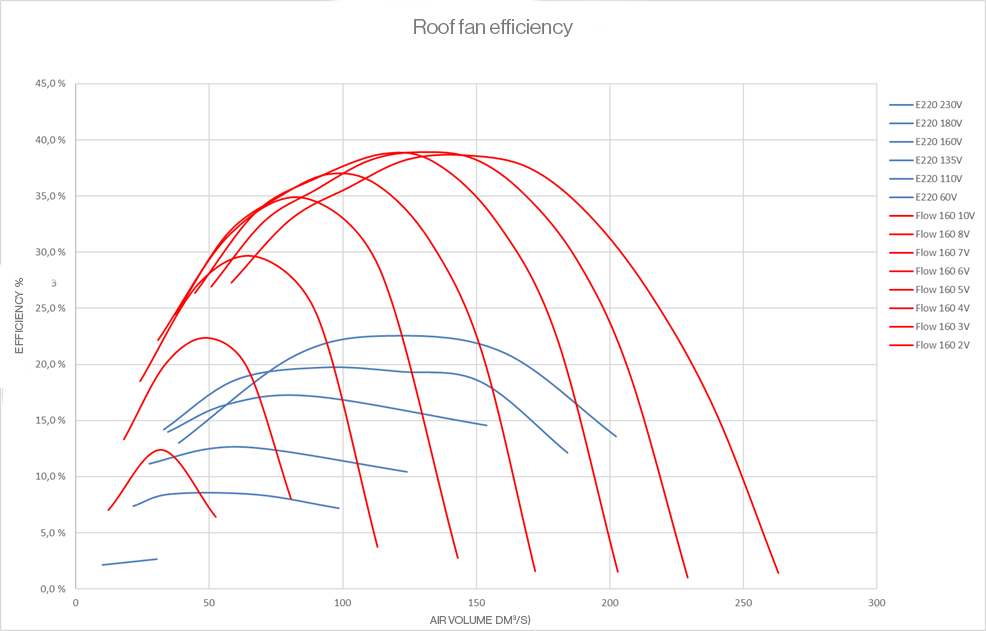The Energy-Efficient EC Motor Becomes More Affordable in the Long Run

Choosing the right roof fan is crucial for both cost efficiency and environmental impact. At a time when energy savings are becoming increasingly important, the choice between AC and EC motors is central. Although AC motors may be cheaper to purchase, it turns out that EC motors, which are more energy-efficient, are the smarter long-term choice. In this article, we explain why EC motors are superior when it comes to energy efficiency and how they can lead to cost savings over time. This is the reason EC motors continue to gain ground and are now the most popular option on the HVAC market.
Differences Between AC and EC Motors
AC motors use alternating current to generate a rotating magnetic field that makes the rotor spin. They are simpler in construction than EC motors and come in two main types: synchronous and asynchronous motors. EC motors are brushless DC motors (BLDC) that use permanent magnets and electronic commutation instead of mechanical brushes and a commutator, which provides better control over speed and torque.
The efficiency of AC motors varies, but asynchronous motors are generally less efficient at lower speeds. EC motors are more energy-efficient than AC motors, especially under varying loads and speeds, and they maintain high efficiency across a wide operating range.
AC motors are often used where constant speed and simplicity are more important than precise speed control. EC motors are ideal for applications requiring variable speed and high efficiency, such as HVAC systems (heating, ventilation, and air conditioning), cooling systems, and industrial automation. AC motors are cheaper to manufacture and purchase due to their simpler construction, while EC motors are more expensive because of their more complex electronic components and the use of permanent magnets.
Energy Consumption of VILPE’s AC and EC Motors
When choosing a roof fan, start by assessing the required airflow, pressure loss, and duct size. Then choose the roof fan that meets these needs and is the most energy efficient. The vast majority of VILPE’s sold roof fans are equipped with EC motors, but the range also includes fans with AC motors (Ø 125 and 160).
Some customers prefer AC motors because they are cheaper than fans with EC motors. However, there are several reasons not to consider only the purchase price when choosing a product. A roof fan with an AC motor has fewer control options and is often limited to fitting a certain airflow rate and room. An EC model, on the other hand, offers more control options and enables demand- and pressure-controlled ventilation (through differential pressure control or constant airflow). This means ventilation can be optimized and energy saved. A roof fan with an EC motor can also be connected to a building management system, making alarms and monitoring possible if the roof fan stops working for any reason. Since many companies are phasing out AC motors as old technology, various add-on products such as smart and demand-controlled control systems are no longer being developed for them.
Example: VILPE’s E190/220 (AC model) and VILPE’s ECo FLOW 125/160 (EC model)
The most important reason to choose an EC motor is that it is more energy-efficient in operation. When evaluating the energy efficiency of fans, efficiency is used. Efficiency is a measure of how effectively a machine or device converts input energy into useful work. It is often expressed as a percentage, where a higher percentage means higher efficiency. An efficiency of 100% means that all input energy is converted into useful work, while a lower efficiency indicates that part of the energy is lost, for example as heat. In the context of roof fans, efficiency shows how effectively the roof fan converts electrical energy into airflow. The roof fans being compared are VILPE E190 (AC) with VILPE FLOW 125 (EC) and VILPE E220 (AC) with VILPE FLOW 160 (EC).
VILPE E190 (AC) compared with VILPE Flow 125 (EC)

Diagram 1 shows that the efficiency of the EC model reaches up to 40%, while the AC model only reaches 20–25%. At 150 pascal (airflow 92.8 l/s), the EC model uses 43.5% less energy than the AC model. At 100 pascal (airflow 86.7 l/s), energy consumption is 44.4% lower, and at 50 pascal (airflow 67 l/s), energy consumption is 58.6% lower for the EC model compared to the AC model.
VILPE E220 (AC) compared with VILPE Flow 160 (EC)

Diagram 2 shows that the efficiency of the EC model reaches almost 40%, while the AC model reaches 20–25% at full power. At 150 pascal (airflow 148.3 l/s), the EC model uses 40.9% less energy than the AC model. At 100 pascal (airflow 134.5 l/s), energy consumption is 44.8% lower, and at 50 pascal (airflow 56.1 l/s), energy consumption is 65% lower for the EC model compared to the AC model.
The EC Model Is the Best Option
When selecting a roof fan, it’s important to consider both the initial cost and the operating costs. Although AC motors may be cheaper to purchase, EC motors are more energy-efficient and offer greater savings over time. This is especially true for fans that operate continuously and are not used sporadically, such as cooker hood fans. This makes EC motors the better choice for both the economy and the environment.
